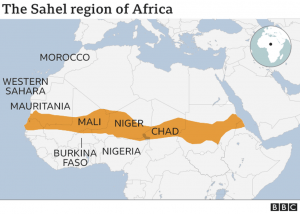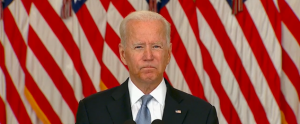
Stony Brook University: Maverick Modeller Helmut Norpoth Predicts Another Win for Trump By Robert Emproto..
Political scientist Helmut Norpoth fields media calls every week seeking comment on the upcoming presidential election. Why the interest? In 2016, he was one of a handful of experts who correctly predicted the outcome of the U.S. Presidential election.
Norpoth, a professor in Stony Brook’s Department of Political Science, has enjoyed notable success forecasting elections based on his Primary Model, a statistical representation of U.S. presidential races based on data going back more than a century.
In 2020, his model once again projects a Trump victory, giving the incumbent President a 90-percent chance of being re-elected in a landslide — a controversial call that runs contrary to current polls.
The Primary Model has correctly predicted five of the past six presidential elections, and when applied to previous elections, correctly predicts an impressive 25 of the last 27, missing only the 2000 election in which George W. Bush defeated Al Gore and the 1960 election in which John F. Kennedy defeated Richard Nixon — two extremely close and contested votes marred by allegations of voting inaccuracies.
Norpoth began working on his model after the 1992 presidential election, putting it to the test for the first time in 1996.
“My first forecast was the 1996 election, the one where Bill Clinton was re-elected for a second term,” he said. “Predicting a Clinton win was considered a stretch at the time because he was pretty bad in his first term.”
Norpoth, who has been at Stony Brook since 1979, correctly predicted Clinton’s win using a very simple early version of his model. He would expand the model in the years to come, an ongoing evolution that continues to this day. But one key metric that was apparent to Norpoth even in the early stages — the importance of early presidential primaries — remains a critical part of the Primary Model.
After the 2008 election, in which Barack Obama won the nomination and then the election despite failing to win the New Hampshire primary, Norpoth expanded the range of primaries to include the South Carolina primary as well.
“But that’s it,” said Norpoth. “I focus on early primaries and the way the candidates perform in those early contests. It’s a very good predictor, and a leading indicator of what’s going to happen in November.”
He described the focus on primaries as the key difference between his model and others.
“It’s all about primary elections, which are real electoral contests and the votes are counted and tabulated,” he said. “I also use real numbers, such as the results of previous elections, which indicate whether the pendulum is swinging away from or toward the White House party. This is something that also relies on real election results and not any kind of an opinion poll.”
Unlike many other projections, Norpoth’s equation ignores approval ratings.
“That’s a poll number,” he said, “and I don’t use those. I think the primary performance of a sitting president is usually a proxy for that. But I don’t use any polling data or data related to opinions.”

In light of this information, Norpoth said he wasn’t surprised that his model gave Trump a very strong chance at a second term.
“When I looked at New Hampshire and I saw that Donald Trump got 85 percent of the votes, and the closest challenger was Bill Weld at 10 percent, I was pretty sure what the model was going to predict,” he said. “If Trump had gotten only 55 percent and an opponent had gotten 40 percent, I may not have predicted that Donald Trump would have a chance to win. Maybe. It would depend on the other side as well.”
As for the Democrats, Norpoth said that the sheer number of candidates and the inability of any one of them to get off to a fast start may have doomed the party from the start.
“People have forgotten how Joe Biden did in New Hampshire,” said Norpoth. “He was terrible. He got 8.4 percent of the vote, which is unbelievable for a candidate with any aspirations of being president.”
So was there anything any of the Democrats could have done this year to get in a better position, or was it Donald Trump’s election to win or lose?
“What the Democrats should have done if they were really serious about beating Trump would have been to rally around one candidate right from the start and not have a protracted battle in which people get wounded,” Norpoth said. “They needed to pick one person and have everybody else take a pass. That’s the only way I could see that my model would have worked in their favor.”
Norpoth, who has studied election primaries going back to 1912, is confident of the math behind his model. While some might suspect that unusual circumstances — e.g., the COVID-19 pandemic and the civil unrest in the wake of the George Floyd killing — might have an unpredictable effect on the election results, Norpoth said those crises have no bearing on his projection.
“My prediction is what I call ‘unconditional final,’” he said. “It does not change. It’s a mathematical model based on things that have happened. The presidential election of 2016 has happened, the primary results are in. I can add in the results of more primaries, but even those numbers have happened and can’t change either.”
Norpoth also scoffed when asked to comment on the argument that the Trump presidency has been widely described as being “unlike any previous presidency.”
“Every president is unique, and I think people get a little carried away with that description,” he said. “Obama was the first Black president. Is that not unique? If Hillary Clinton had won in 2016, she would have been the first woman president. Is that not unique? I grant that Trump is in many ways a very special kind of character, but I think we also tend to exaggerate that.”
One model change Norpoth has made for the upcoming election has been to focus on the Electoral College.
“Now I predict straight to the Electoral College,” he said. “I’ve never done that before, but I made an adjustment because of the mismatch we had in 2016, and I’m prepared to see Trump lose the popular vote again. So this prediction is entirely about the electoral votes.”
Norpoth said that while he manages not to get emotionally connected to these projections, the reactions to his projections sometimes do take an emotional toll.
“I get a lot of reactions, and I get a lot of mail,” he said. “Some of the comments are unprintable. I do get backlash, and I get it from people whose opinions I value, people who are friends. And I can tell that some people find it difficult. So there is an emotional part that goes on.”
But at the core, said Norpoth, it’s just math.
“Everybody thinks Trump is going to go down in flames, and here I am predicting with almost total certainty that he’s going to win,” he concluded. “It seems crazy. But it’s not.”
Twenty-five of the last 27 U.S presidential elections can vouch for that.
First published by Stony Brook University on August 3, 2020.




